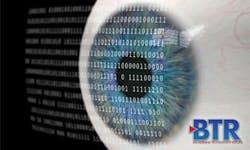The acronym for the Intelligent General Next Operations Systems CableLabs working group is … well … quite InGeNeOS. Is it not?
The focus is on how to use network operations tools and techniques from DOCSIS data made available from the cable modem, CMTSs, and test devices. The idea is use the DOCSIS system information in solutions that identify, diagnose, and sometimes automatically correct network problems, many times proactively.
While Proactive Network Maintenance (PNM) relies on many sources, including field meters, sweep systems, and network management information from network devices including CMTSs, having a PNM-capable cable modem is a "huge advantage" for operators, since these are at every customer location, said Jason Rupe, principal architect at CableLabs. The DOCSIS specification document identified at least 10 PNM data responses that are PNM data elements, including full band spectrum capture, receive modulation error ratio (MER) per subcarrier, pre-equalization settings, and forward error correction (FEC) data.
"The InGeNeOS group has proposed solutions for how to make use of these data elements and how to solve some of the most service-impactful operations problems that cable operators deal with," said Rupe. "Find LTE ingress, detect and locate echo cavities, or find and eliminate noise ingress in more efficient, less expensive ways."
Currently, the group is working on identifying and documenting methods that allow operators to take data and create tools or manually use the data to perform maintenance or operations tasks. Rupe said he expects the best practices will include basic information such as how to parse the data sources to make them understandable, how to plot data, and other mechanics.
"We probably will have quite a lot about various methods for identifying plant issues in those data once they are parsed, from basic statistical methods all the way to anomaly detection and machine learning. We might even include some material that explains basic best practices for setting up the service or the plant at the start. You can't get much more proactive with maintenance than that," Rupe said.
Since PNM cuts across all technologies, the InGeNeOS group plays a role in emerging tech, including the up and coming Full Duplex DOCSIS. The group is drafting a point of view document, which tracks what has already been discussed and discovered. The specification team will be able to use this like requirements.
"I think the role of the group should be to act as the voice of service quality and reliability for the industry," Rupe said. "Before creating the next technology, we have to participate in the design process to ensure (it) incorporates quality and reliability in the design. You can't expect just to test a poorly designed network to make it reliable, as a deployed product is much more expensive to fix than one in the design phase."
Some of the problems the group has worked on, and continues to work on, include upstream noise funneling, which is often sourced in customer homes. Improved detection is only part of the solution, Rupe said, which also requires searching for new technologies to mitigate the sources. Rupe said InGeNeOS also has been discussing some "curious" RxMER observations that have been made in the field.
"I expect we'll keep pushing on this until we find the causes, document them, and then develop methods for operators to use," Rupe said. "We've recently learned that amplifiers can have interesting impacts on RxMER results after finding a ripple pattern due to an echo tunnel from an impedance mismatch in the plant."
